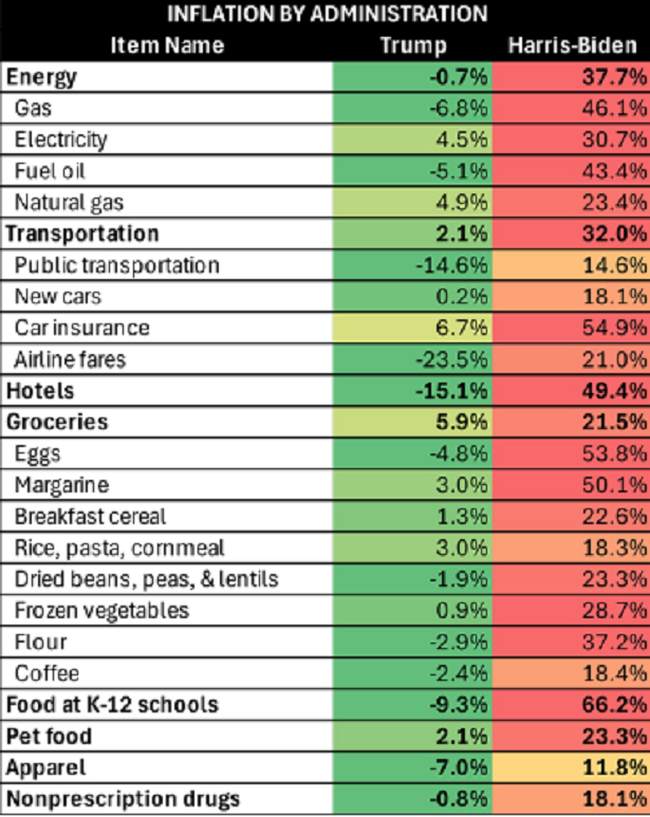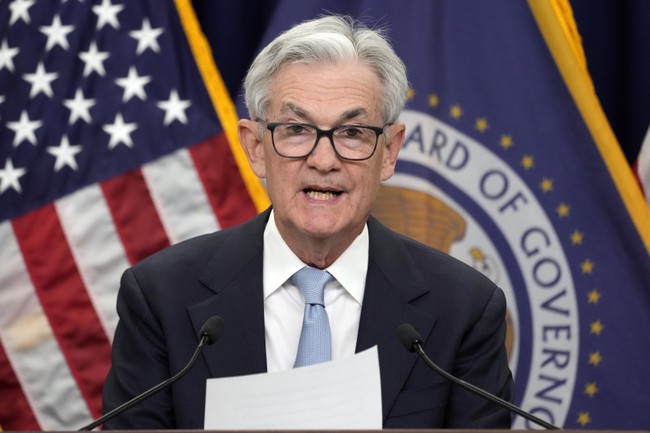A new report released Wednesday by the Biden Labor Department shows that inflation has started to budge, if only minimally, in the August report card on the health of the American economy. It comes ahead of next week’s meeting of the Federal Reserve, which is expected to finally begin a series of interest rates cuts in September. But, the report’s data showed a troubling trend in how much consumers continue to pay for their families’ everyday needs.
The post-pandemic spike in U.S. inflation eased further last month as year-over-year price increases reached a three-year low, clearing the way for the Federal Reserve to cut interest rates next week.
Wednesday’s report from the Labor Department showed that consumer prices rose 2.5% in August from a year earlier, down from 2.9% in July. It was the fifth straight annual drop and the smallest such increase since February 2021. From July to August, prices rose just 0.2%.
Excluding volatile food and energy costs, so-called core prices rose 3.2% in August from a year ago, the same as in July. On a month-to-month basis, core prices rose 0.3% last month, a slight pickup from July’s 0.2% increase. Economists closely watch core prices, which typically provide a better read of future inflation trends.(emphasis mine)
The report showed that the main driver of the slower rise in inflation was lower gas prices in August, but prices at the grocery store were “unchanged”:
A key reason for last month’s drop in overall inflation was the third decline in gas prices in the past four months: Average gas prices fell 0.6% from July to August and are down 10.6% from a year ago. Used cars fell 1% last month. Measured from a year earlier, used car prices have tumbled 10.4%.
Grocery prices were unchanged from July to August, extending a cooling in food costs even though they remain much higher than they were three years ago.
Another negative number in the report, which caused core inflation to rise in Aug., was the jump in rents and housing costs:
Still, the cost of rents and housing rose faster from July to August than they had the previous month, a big reason why core inflation ticked up. Fed officials, who are watching housing costs closely, expect them to cool more consistently in the coming months.
According to the real estate brokerage Redfin, the median rent for a new lease rose just 0.9% in August from a year earlier, to $1,645 a month.
The Fed, meanwhile, appears to have seen enough, and will switch to a policy on interest rates aimed at buffering the “cooling” job market:
Federal Reserve officials have signaled that they’re increasingly confident that inflation is falling back to their 2% target and are now shifting their focus to supporting the job market, which is steadily cooling. As a result, the policymakers are poised to begin cutting their benchmark interest rate from its 23-year high in hopes of bolstering growth and hiring.
Analysts from several sources think the central banking group will begin with a modest, quarter-percent cut after its meetings conclude.
Update: For those readers who like to dig into the numbers, here’s a handy chart showing how much more things cost for Americans under Kamala Harris and Joe Biden’s watch, versus former President Donald Trump. It’s stunning that Harris’ campaign claims things are better for American families:

This is a developing story. RedState will provide updates as they become available.

